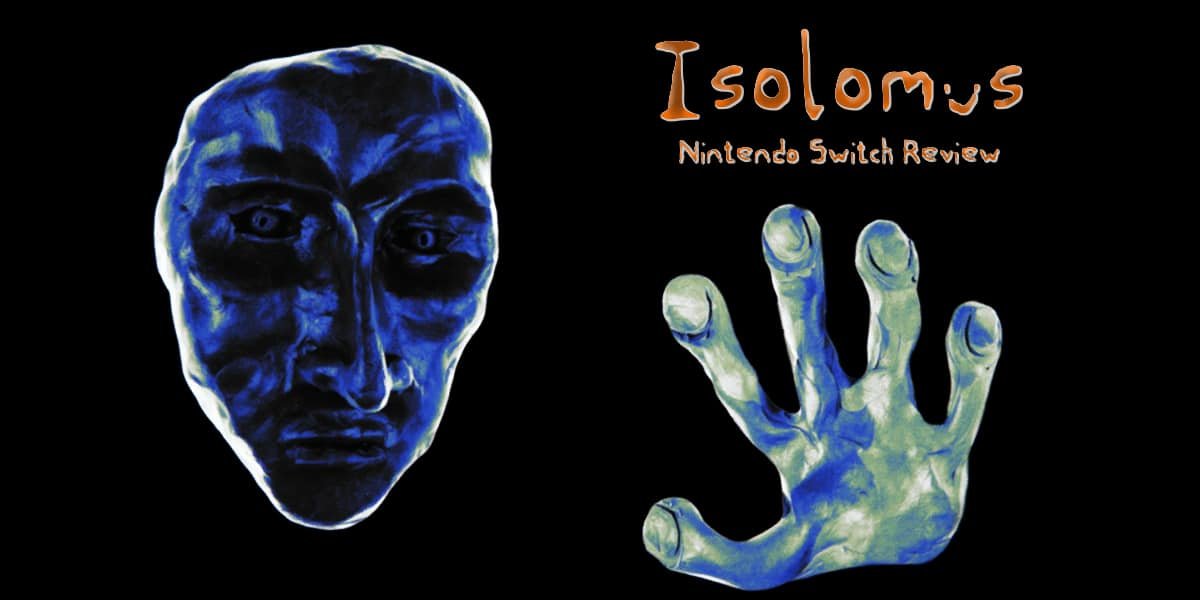Quick View
Release Date: April 14, 2021 (Switch)
Price: $1.99
Rating: T
Platform: PC and Switch
A game key for Isolomus on the Nintendo Switch was provided by Sometimes You.
I'm not sure how to talk about Isolomus. It's a new game for the Nintendo Switch made by Michael Rfdshir, except it's not really much of a game. The gameplay it does have is basically just touching the screen to interact with a few objects. Occasionally you drag things around, point-and-click style. That's about all you do, and it's short, too. Playing through Isolomus will probably only take you about 10 minutes.
It's short and simple and surreal, but Isolomus is also really unsettling and disturbing and I can't stop thinking about it.
Isolomus is Beautiful and Sad

The absolute most striking thing about Isolomus is its visuals. The entire game is presented in stop motion animation of hand sculpted plasticine figures. Throughout the game, you'll encounter people, buildings, and creatures that are all impressive to just sit and look at. The game is beautiful, but not in a fun way.
All of these sculptures are sad. Everything feels a bit run down and gloomy throughout the game. This is wonderfully conveyed by the stark black background everything takes place on, and the somewhat janky movement of the clay figures really emphasizes it. Even before you touch the title screen to start playing, it's clear that this game is not aiming for a fun atmosphere.
What do you actually do in Isolomus?

It's hard for me to talk about the gameplay in Isolomus because there really isn't much there. If you checked out Wurroom, a previous game from the same creator, you know more or less what you're in for.
It almost feels like a visual novel, just without any words. Each scene presents you with a few objects that you can poke at until you find a way to interact. In many cases, there are only one or two “things” that you can do in each scene. As you play, certain decisions will pop up a circle showing which choice you made.
At the end of the game, you end up coming across one of two endings. According to the game's Nintendo page, “The question is which of them is the worst.” I could tell you that I know for sure which one I felt was the worst, but I don't really want to tell you anything about either of them.
After the ending, you get a screen showing you all the possible decisions, with the ones you didn't choose in gray. This is a nice incentive to dip back in and play the game a few times to try to see every possiblity. It'd be nice if it actually tracked which you'd found across all of your playthroughs, but I think that the game doesn't really want you to play it like a checklist.
Final Thoughts

I've played through Isolomus twice. I'm not sure that I've actually liked it either time, but I've had an emotional response to it that threw me way off-kilter as I played it. Even more important, though, is that the imagery of this game and the unease it made me feel has stuck with me. It's almost like having flashbacks where I will suddenly see clay figures in my mind's eye and feel a sense of dread wondering what's going to happen when I reach out to them.

I don't really know what Isolomus is about. It's creepy and weird, and I'm not sure who it's for. If you feel like spending a quarter of an hour having a game reach into your brain and twist things around a bit, then I guess that it's built exactly for you.
That's not normally what I look for in a game, but I think it does what it wants to do. And I'm a big fan of small games that do what they want to do.
Geek to Geek Rating: 4 out of 5
You can hear TroytlePower's live first impressions of Isolomus on his podcast.

